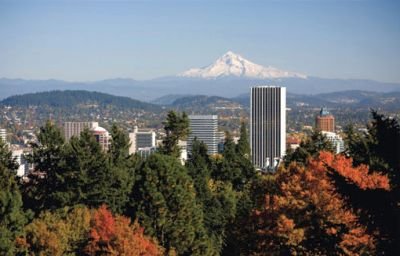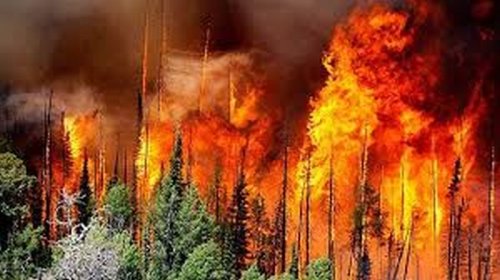Study Finds Pacific Northwest Temperatures Warmed over the Past Century
In their study, the researchers looked at temperatures and precipitation from 1901 to 2012 in the Northwest.

(CORVALLIS, Ore. ) — The annual mean temperature in the Pacific Northwest has warmed by about 1.3 degrees Fahrenheit since the early 20th century – a gradual warming trend that has been accelerating over the past 3-4 decades and is attributed to anthropogenic, or human, causes.
The study is one of the first to isolate the role of greenhouse gases associated with regional warming, the authors say.
It was published in a recent issue of the Journal of Climate, a publication of the American Meteorological Society.
“The amount of warming may not sound like a lot to the casual observer, but we already are starting to see some of the impacts and what is particularly significant is that the rate of warming is increasing,” said Philip Mote, director of the Oregon Climate Change Research Institute at Oregon State University and a co-author on the study.
“Just a 1.3-degree increase has lengthened the ‘freeze-free’ season by 2-3 weeks and is equivalent to moving the snowline 600 feet up the mountain,” Mote added. “At the rate the temperature is increasing, the next 1.3-degree bump will happen much more quickly.”
In their study, the researchers looked at temperatures and precipitation from 1901 to 2012 in the Northwest, which includes Washington, Oregon, Idaho, western Montana, and the northwestern tip of Wyoming. They examined four different factors to determine the influence of human activities, including greenhouse gases and aerosols; solar cycles; volcanic eruptions; and naturally occurring phenomena including El Niño events and the Pacific Decadal Oscillation.
Using what is called a “multilinear regression” approach, they were able to tease out the influences of the different factors. Volcanic activity, for example, led to cooler temperatures in 1961, 1982 and 1991. Likewise, El Niño events led to warming in numerous years.
“Natural variation can explain much of the change from year to year, but it cannot account for this long-term warming trend,” noted David Rupp, a research associate with the Oregon Climate Change Research Institute and co-author on the report. “Anthropogenic forcing was the most significant predictor of, and leading contributor to, the warming.”
Among the study’s findings:
- The Northwest experienced relatively cool periods from 1910-25 and from 1945-60, and a warm period around 1940 and from the mid-1980s until the present.
- The warmest 10-year period has been from 1998 to 2007, and very few years since 1980 have had below average annual mean temperatures.
- The most apparent warming trend is in the coldest night of the year, which has warmed significantly in recent decades.
- The only cooling trend the study documented was for spring temperatures the last three decades and is tied to climate variability and increasing precipitation during those spring months.
“The spring has been robustly wetter,” Mote said, “and that has brought some cooler temperatures for a couple of months. But it has been drier in the fall and winter, and the warming in fall and winter has been steepest since the 1970s.”
Lead author John Abatzoglou of the University of Idaho said that the study ties the warming trend to human activities.
“Climate is a bit like a symphony where different factors like El Niño, solar variability, volcanic eruptions and manmade greenhouse emissions all represent different instruments,” Abatzoglou said. “At regional scales like in the Northwest, years or decades can be dominated by natural climate variability, thereby muffling or compounding the tones of human-induced warming.
“Once you silence the influence of natural factors,” he said, “the signal of warming due to human causes is clear – and it is only getting louder.”
The researchers also explored but were unable to find any link between warming in the Northwest over the past century and solar variability.
A major concern, the authors say, is that the warming seems to be increasing.
“Climate is complex and you can get significant variations from year to year,” Mote said. “You have to step back and look at the big picture of what is happening over time. Clearly the Northwest, like much of the world, is experiencing a warming pattern that isn’t likely to change and, in fact, is accelerating.
“At this rate, the chance of the temperature only going up 1.3 degrees in the next century is close to zero.”
The study was funded by the U.S. Department of Agriculture and the National Oceanic and Atmospheric Administration.
Source: Oregon State University



